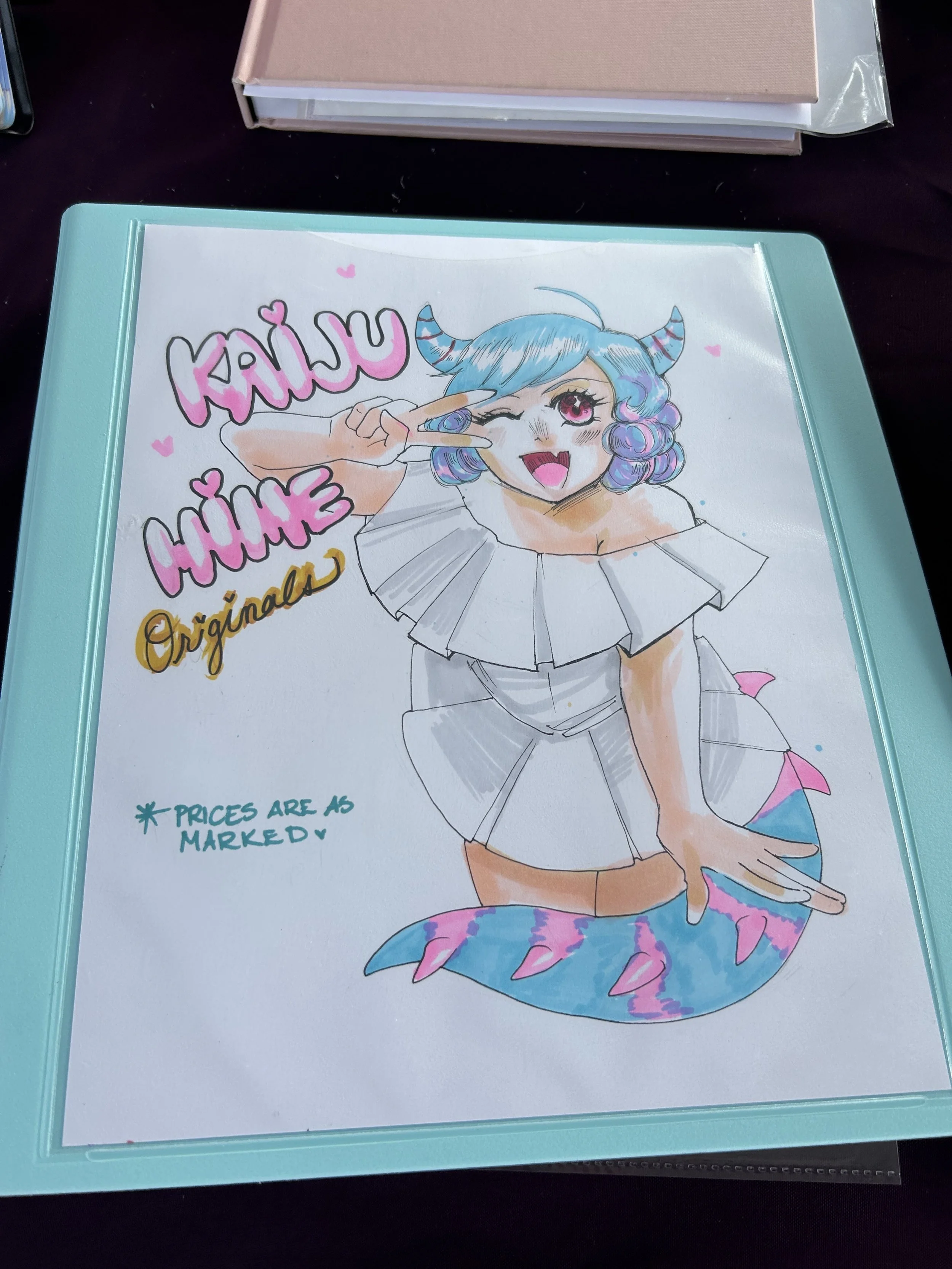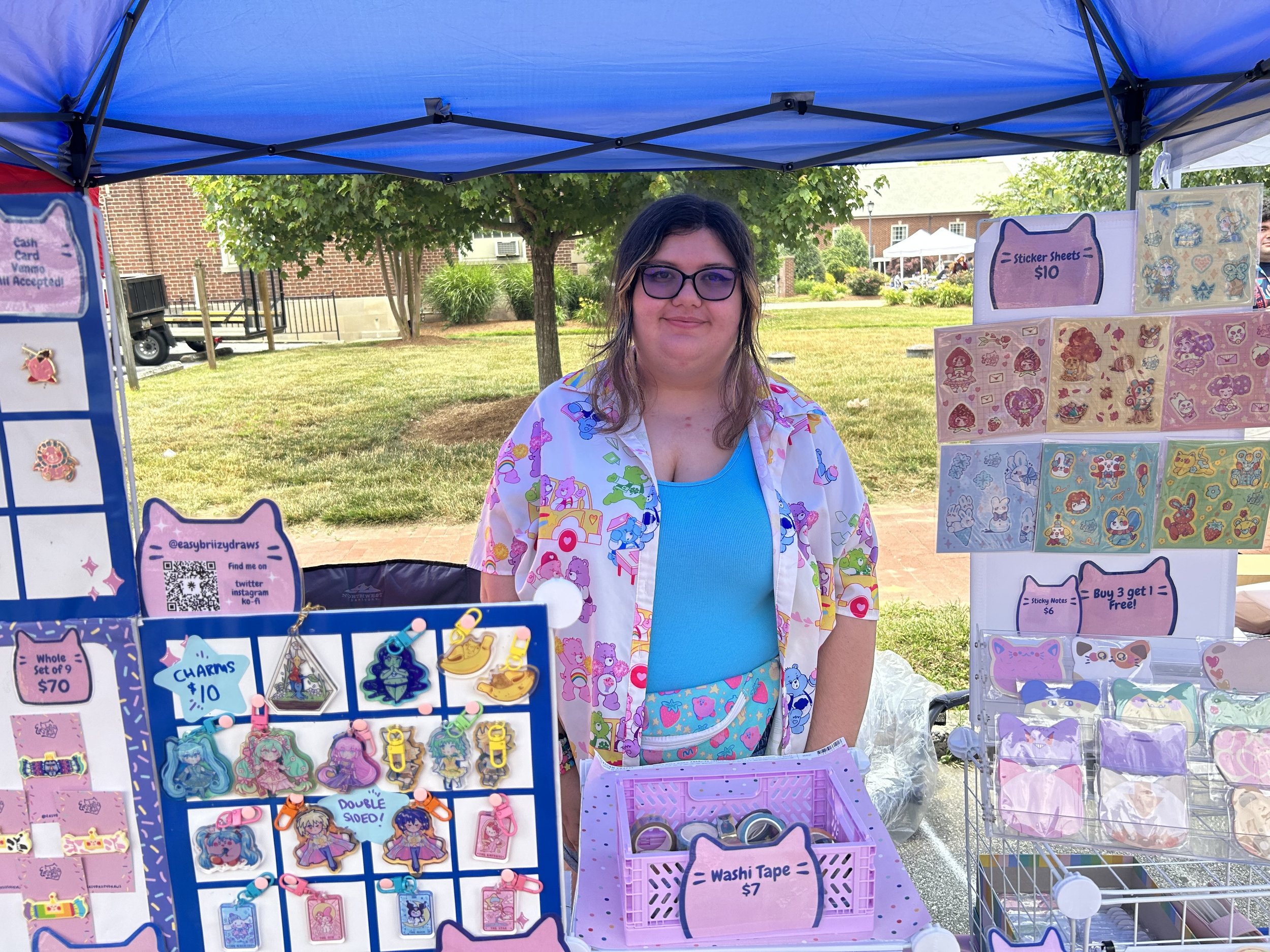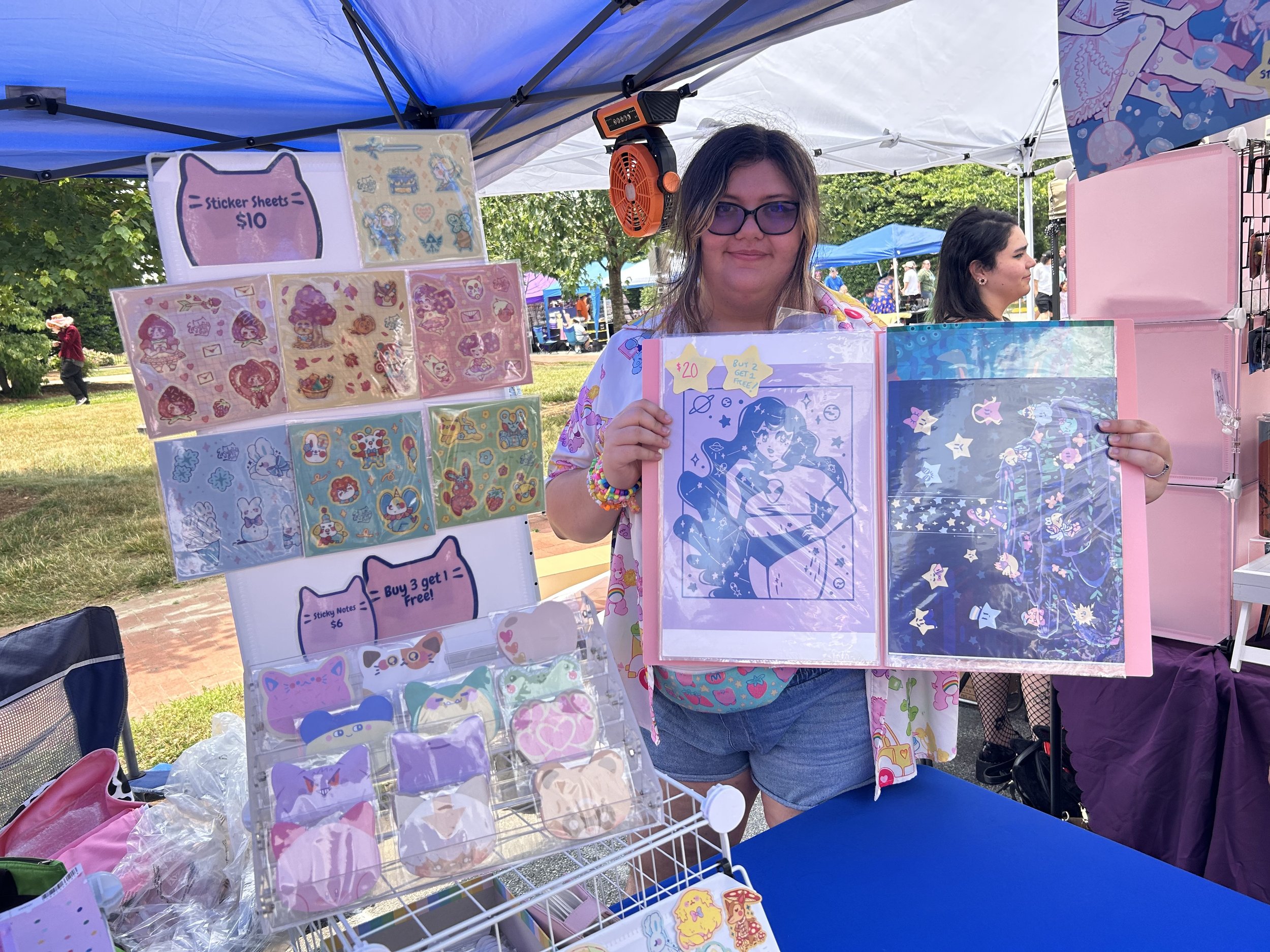Embracing the Spirit of Dover Comic Con Once Again.
Josh B.
I’ve been attending conventions from a very young age. My father would take me along to Toy Conventions back when he still actively collected action figures and knick-knacks from TV shows he grew up with. I attended my first New York Comic Con back in 2010. I’ve always loved attending conventions for the camaraderie they bring. Seeing hundreds of people out and about to celebrate the things they love most, things that I love as well really makes me happy. I bring all this up because, over the years, I’ve come to really appreciate the smaller, more independent cons. Bigger conventions have more exciting guests and a wider variety of vendors, but the smaller ones feel a lot more personal, like the ones I grew up with. And so, I was thrilled to return to Dover Comic Con, for my second year in a row and I’m delighted to say this year was even better than the last.
This year’s event actually had a panel of interest to me: Manga Translation, hosted by Amber Tamosaitis, a freelance translator who has worked on titles such as Laid-Back Camp, Go for it, Nakamura!, and Orange, to name a few. Sitting in on her panel, I learned a lot about the translation process for manga, both the joys and the challenges. As Amber described it, her process begins with reading the manga to decide if she would be a good fit for the material, and read ahead to ensure consistency. If the title is one she wants to work on, Amber requests a house style guide for honorific use (tags at the end of names in Japanese culture, such as -san, -chan, or -sensei, to name a few). Sound effects in manga are something translators have to deal with, whether it’s simply adding a subtitle to translate the stylized sound effect text, or replacing it entirely with new English text is entirely at the licensor’s discretion. One of the biggest challenges for manga translators comes in the size of the speech bubbles on the page. Because of the difference in language, it can be a challenge to retain the full intent of dialogue while remaining in the margins. Jokes are another hurdle translators have to clear for American audiences, as much of Japanese humor is based around word-play that doesn’t translate to English, or pop culture references that the average reader may not understand without knowledge of Japanese history or pop culture. So, it’s up to Amber to bridge the gap, either by providing context in a notes section at the end of the book, or by rewriting the joke entirely.
Amber also spoke out about a common thing that people often get confused about – the difference between Localization, Translation, and Adaptation
Localization is a broad term for “bringing something from overseas to a domestic audience.”
Translation is, simply put, “changing languages”
Adaptation is “multifaceted – in manga it means editing translations, and in anime it means matching dubbed lines to the characters’ mouth movements, or lip flaps, as they’re called.”
The difference between Translators and Adaptors is that “translators provide the most accurate version of the source material, while adaptors change it to suit their target audience.” I never thought to make the distinction between these terms, so it was enlightening to have an industry professional define them for me.
The translation panel also divulged a few fun facts regarding both older and modern translations. For instance, the infamous labelling of rice balls in the Pokémon anime as “jelly donuts” was actually a decision made by the publisher, not by the translators of that series. Additionally, the way translators adapt Japanese accents has changed in recent years. In the past, characters from the Kansai region of Japan were localized to have Texan or Bostonian accents, as the Kansai region of Japan is known for farmlands, much like the American south. This led to characters like Osaka from Azumanga Daioh having a thick southern drawl. However, modern translations no longer use this short-hand, as it’s come to be seen as an oversimplification at best, and inaccurate at worst. And so, translation for characters like that is done differently today. When translating for Laid-Back Camp, Ms. Tamosaitis had to adapt the character Aoi, who speaks in the Tōkai–Tōsan dialect of Yamanashi-Ben. To portray this, she had Aoi use more contractions and idioms than the other characters in the series, who all speak Tokyo-Ben, considered to be the standard Japanese dialect. I thought this was fascinating, as the Kansai “Texas” accent has been a staple of anime and manga for years – I had no idea that translators had moved away from such a reading until now.
Finally, Amber had some advice for those wanting to get into the translation game. Firstly, you must study Japanese intensely if you are to work in translation. The JLPT (Japanese Language Proficiency Test) is the best metric to determine how effective you are at translation, and most companies you apply to will want to see your scores from that test, so study hard. Networking is especially important in translation as most manga translators are freelancers. The only translators that work in-house at a particular studio are those in leadership roles, so you shouldn’t expect a dedicated position at any one company.
It was a pleasure to hear Ms. Tamosaitis talk about her work, and I thank Dover Comic Con for giving her a platform to do it on. That said, a convention is nothing without its vendors, and this year, I had the pleasure of speaking to several fine independent artists who had set up shop in Dover, Delaware.
The first two artists I had the privilege of speaking with were Kaiju-Hime (AKA Destinie) and her husband, Patrick Waugh. Kaiju-Hime is, as you’d expect, a kaiju enthusiast and an artist, having drawn dinosaurs and sharks from a young age. She’s been making art of classic Kaiju, from Godzilla to Gamera and other Kaiju creations for years.In 2021, she made her online debut as a VTuber (Virtual YouTuber) with her own original, self-titled character, Kaiju-Hime.
Joshua Brafman (JB): So, can you tell me a little bit about where the character of Kaiju-Hime came from?
Kaiju-Hime (KH): Well, back in 2016, I was diagnosed with breast cancer. As I was going through chemo, my husband bought me a blue and pink wig that I wore after my hair fell out and I just kept imagining myself as a monster kicking cancer’s ass. The character of Kaiju-Hime herself was created in 2017. I’ve been building on her, adding to her lore ever since.
Destinie and her husband, Patrick Waugh.
JB: I’m so glad to see you’ve recovered! I’ve also had cancer in my family and I know how tough that can be. I see here you’ve participated in a number of Zines, collections of art and stories made by fans. Can you tell me a little bit about how you got involved in those?
KH: Really it was thanks to internet spaces like Twitter that allowed me to connect with other Kaiju fans and artists, and that’s how I got involved with the Zines.
JB: Who are your favorite Kaiju?
KH: Burning Godzilla is number one. I actually have a tattoo of him – I really connected with the intensity and rage he had during my fight with cancer. I watched Godzilla VS. Destoroyah a lot when I was in chemo. I also love King Caesar and Gamera!
JB: King Caesar is super underrated! So, is there anything you’d like the people out there reading this to know?
KH: Just that I’m grateful to everyone who looks at my work. People enjoying my art gives a lot of meaning to what I do.
JB: Wonderful! Where can people find you online?
KH: Well, you can find my art online on my website, I’m also on Twitter and Instagram, and I stream over on Twitch!
After speaking with the talented Kaiju-Hime, I spoke with her equally talented husband, Patrick Waugh. Patrick and Destinie met and began dating during their second year at the Delaware College of Art and Design. Soon after, they were married, and making wonderful art together. Like Kaiju-Hime, Patrick also loved giant monsters from a young age, drawing them since he was six years old. In particular, he recalls drawing every Kaiju he saw onto one long scrolling piece of paper. Ever since then, he’s been making art of all the creatures he loves.
JB: I see here that you not only make traditional art prints, but door hangers, magnets and even a Gigan Dakimakura! What inspired you to branch out into other mediums like these?
Patrick Waugh (PW): Well, my wife and I used to attend G-Fest, and we saw all sorts of different mediums being used to sell people’s art. So we decided why not branch out and work with other stuff besides prints? We believed it would help us stand out.
JB: Definitely! So, I see Kaiju-Hime has her OC artwork here, do you have any original work in the pipeline?
PW: Oh, absolutely! I’m currently developing a deduction-type card game kind of like Werewolf, and my wife and I are co-developing a game based around an anime club at a place called The Game Crafter.
JB: That sounds like quite an undertaking. How long have you been developing card games?
PW: Since 2016. The first game I put out back in 2017 was called Temptation of the Sphinx Diamond. It’s a 1920’s style deduction game where you have to figure out how to successfully steal the ancient artifact, the Sphinx Diamond. And you’re right, it is an undertaking. It takes a decade to make a good card game, going from development, to play testing to art.
Patrick Waugh - How to play Temptation of the Sphinx Diamond
JB: What’s this anime club game about?
PW: Ah, that’s Destinie’s baby, it’s been an idea of hers since college, though we only seriously started working on it together in 2021.
KH: It takes a lot of inspiration from the anime Ouran High School Host Club. Basically, you play as the president of the Anime Club and you have to dress up to win fans and get your club to be more popular!
JB: Interesting! So, Patrick, are there any other original concepts you’ve been working on?
PW: Yeah, I’m currently producing a WebToon comic called Rice Ball: Adventures on Picnic Island. I started it back in 2020, it’s about a rice ball who goes on adventures on an island full of living food.
JB: Very cool! So, who are your favorite Kaiju?
PW: King Kong and Gamera! I really like the sympathetic, heroic type of Kaiju.
JB: Classic picks, very nice! So, where can people find you and your stuff?
PW: Well, I’m online via Twitter and Instagram, with a separate Instagram for the card games. I share an online storefront with my wife, and you can find the comic on WebToon!
After that lovely conversation with two fellow Kaiju fans, I explored the con further and found another local artist named Bri, who goes by EasyBriizy online. Bri was one of only a handful of artists at the con selling her art almost exclusively outside of simple prints, expanding into fanny packs, keychains and even pillows! I had the chance to speak with her about her lovely, colorful works of art.
JB: So, when did you get your start?
Bri (B): Well, I’ve been an artist all my life, but I started selling my art as a business back in 2018.
JB: So, how do you choose which fandoms to engage with, which series to make art from?
B: Honestly, I just make art of the stuff I love, like Pokémon and Katamari Damacy. Katamari in particular is a big influence on my own art style due to its use of color and unique character designs.
JB: I see! What made you produce your art in different mediums like these?
B: I’ve always enjoyed functional artwork. It’s why I put my art on sticky note sets, pillows and lanyards, things that people can really use, you know?
JB: Makes sense to me! Do you have any original artwork you’d like to promote?
B: I do have this alien OC I made, she doesn’t have a name yet, but she’s plus sized and has stretch marks. She’s sort of my mascot character. I’m a big proponent of body diversity and I have original work using characters of all different body types. My goal is to make more original content with these characters.
JB: Awesome! Where can people find your art?
B: You can find me on Twitter, Instagram, my online store or my Discord server!
Finally, I came upon a local comic artist named Alim Leggett, the creator and publisher of his own comic series, Sweet Pea. I had the pleasure of speaking with him for a brief time to get some insight on his exciting new comic.
JB: So, when did you start writing comics?
Alim Leggett (AL): I’ve been an artist all my life, but I published my first comic in 2022.
JB: Cool! What can you tell me about Sweet Pea?
AL: Well, Sweet Pea is the story of a father and daughter living in Philadelphia. Basically, an event happens that introduces monsters into the world and starts giving people superpowers. The father and daughter have to navigate this new world to find each other. The story explores a young adolescent growing up in a violent environment, and the effects that has on her, like PTSD.
JB: Very interesting! So, where can people find your comic?
AL: Right now, you can find it on Instagram and Facebook, the best way to get it is to message me on those accounts directly. I’ll be having a Kickstarter for Issues 2-4 soon, so keep a look out for that as well!
Finally, before I headed out, I had the opportunity to revisit two of the artists that I met with last year: Bryce Bullock of Pankake Images and Jenn Rust of The Sunflower Club!
Bryce Bullock is the author of several independent comic series, chief among them being Inchworm and Daddy Long Legs, which has just released its fourth issue. There will be a collected edition of all Inchworm and Daddy Long Legs comics after issue five releases. Bullock’s other series, Grave Mistake, has put out its second issue. He’s also branched out into apparel, releasing T-Shirts with his characters on it. He’s also put out Inchworm and Daddy Long Legs coloring books, to, as he puts it, “let little kids engage with the characters.” It’s safe to say Mr. Bullock isn’t slowing down one bit! All of his work is available on Amazon.
Jenn Rust
Finally, I checked in with Jenn Rust of The Sunflower Club. The Sunflower Club is a global independent animation company looking to get its start with more creator-driven, LGBTQIA+ positive content, and in the year since I last spoke with their organization, they’ve certainly been busy. Their flagship animation, Little Wolf, is set to have an IndieGoGo for its production launch August 1st, after the initial donations from Ko-Fi got them started. They’re hoping to raise twenty-five to fifty thousand dollars to produce this short film. That said, they’ve also just recently begun production of another short film called All You Can’t Eat, one in a series starring an original character called Annie Pasto. Animation takes a long time and a lot of capital, but I have faith this crew will pull it off!
This is why I love local, smaller cons like Dover Comic Con. It’s the people, the sheer variety of art, and the love of pop culture that brings us all together. I had a blast this year, and I can’t wait to return to Delaware next year, for another lovely experience.













